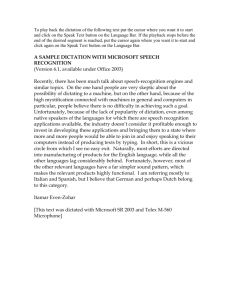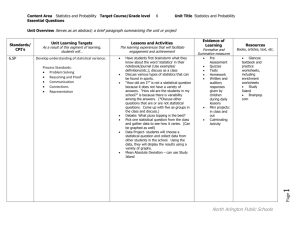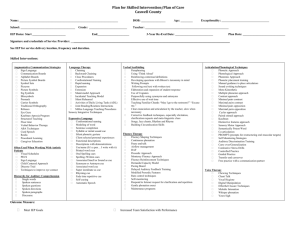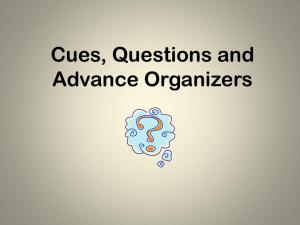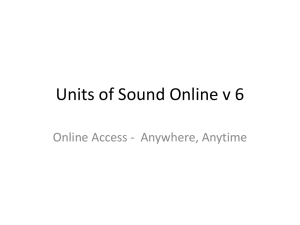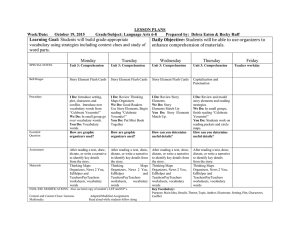Checklist of Reasonable Classroom Accommodations
advertisement
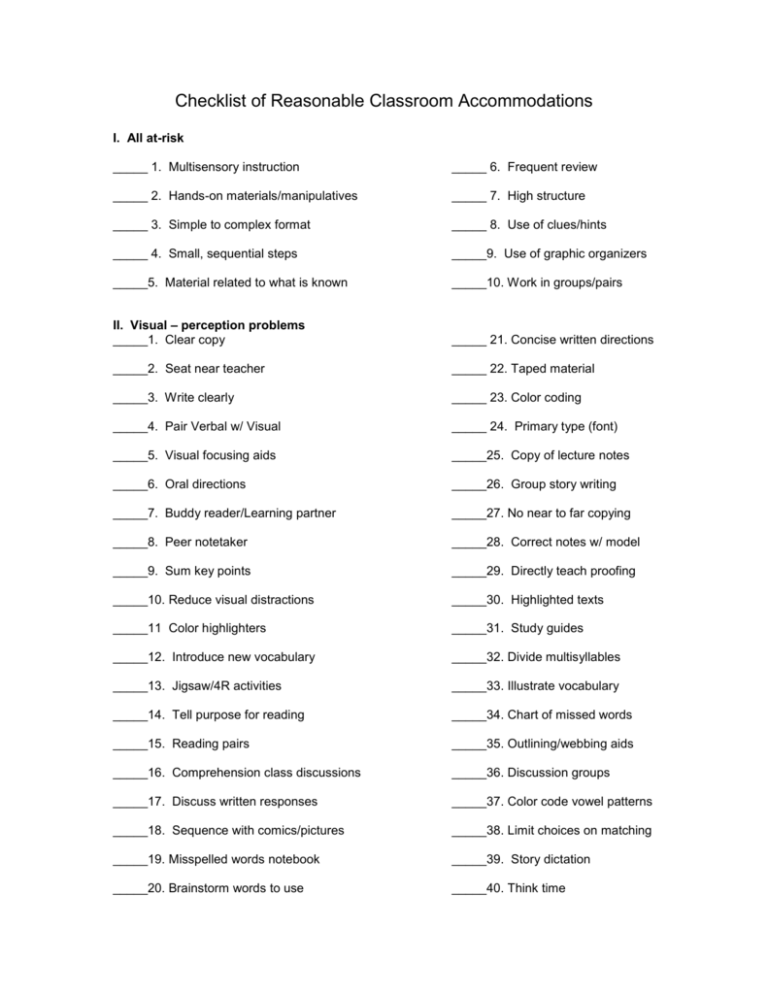
Checklist of Reasonable Classroom Accommodations I. All at-risk _____ 1. Multisensory instruction _____ 6. Frequent review _____ 2. Hands-on materials/manipulatives _____ 7. High structure _____ 3. Simple to complex format _____ 8. Use of clues/hints _____ 4. Small, sequential steps _____9. Use of graphic organizers _____5. Material related to what is known _____10. Work in groups/pairs II. Visual – perception problems _____1. Clear copy _____ 21. Concise written directions _____2. Seat near teacher _____ 22. Taped material _____3. Write clearly _____ 23. Color coding _____4. Pair Verbal w/ Visual _____ 24. Primary type (font) _____5. Visual focusing aids _____25. Copy of lecture notes _____6. Oral directions _____26. Group story writing _____7. Buddy reader/Learning partner _____27. No near to far copying _____8. Peer notetaker _____28. Correct notes w/ model _____9. Sum key points _____29. Directly teach proofing _____10. Reduce visual distractions _____30. Highlighted texts _____11 Color highlighters _____31. Study guides _____12. Introduce new vocabulary _____32. Divide multisyllables _____13. Jigsaw/4R activities _____33. Illustrate vocabulary _____14. Tell purpose for reading _____34. Chart of missed words _____15. Reading pairs _____35. Outlining/webbing aids _____16. Comprehension class discussions _____36. Discussion groups _____17. Discuss written responses _____37. Color code vowel patterns _____18. Sequence with comics/pictures _____38. Limit choices on matching _____19. Misspelled words notebook _____39. Story dictation _____20. Brainstorm words to use _____40. Think time III. Auditory perception problems _____1. No distraction seating _____ 14. Quiet work area _____2. Short oral directions _____ 15. Key points on board _____3. Oral with written directions _____ 16. Copy of class notes _____4. Student repeats directions _____ 17. Pair visual and auditory _____5. Alert to directions _____ 18. Circulate and assist _____6. Talk more slowly _____ 19. Teach student to listen _____7. Vary voice tone and pitch _____ 20. Visual cue for key points _____8. Provide outline of lecture _____21. Stress patterns _____9. Word families _____ 22. Practice dictation _____10. Group words w/ same visual pattern _____ 23. Make dictionaries _____11. Have example on worksheet _____ 24. Use flash cards _____12. Wait time _____ 25. Multi-media to introduce or summarize _____26. Teach from pics to written _____13. Word bank IV. Organizational prolems _____1. Write on every other line _____14. Give time to organize _____2. Do prewriting activities _____15. Short, simple directions _____3. Daily routine _____ 4. Show samples of finished product _____16. Color-coded book covers And homework folders _____17. Narrow choices _____5. Homework recording (homework planner) _____18. Give page answer is on _____6. Review and familiarize _____19. List materials needed _____7. Factual to abstract questions _____20. Cue to inferential thinking _____8. Post HW assignments in same place _____21. SQ3R _____9. Explain changes in routine _____22. Block worksheets _____10. List steps for assignment _____23. Graphic organizers _____11. Uncluttered worksheets _____24. Clock face for due time _____12. Check timeline for long assignments _____25. Review notes daily _____13. Procedure for finished work _____26. Teach abbreviations
